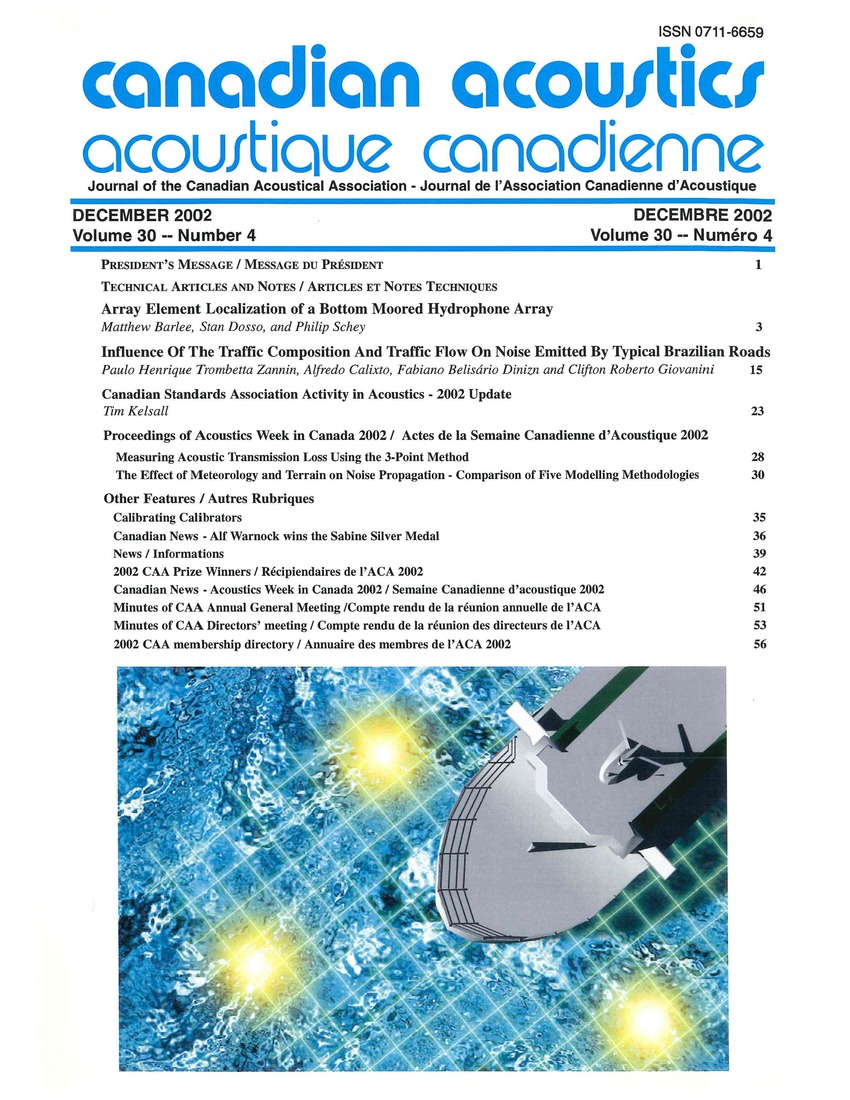Array element localization of a bottom moored hydrophone array
Keywords:
Acoustic receivers, Algorithms, Computer simulation, Hydrophones, Inverse problems, Linearization, Monte Carlo methods, Mooring, Parameter estimation, Sensors, Tracking (position), Underwater acoustics, Array element localization, Hydrophone array, Light bulbs, Matched beam processing, Sound source localization, Ultra light horizontal arrayAbstract
In ocean acoustics, rapidly deployable, autonomous, bottom moored hydrophone arrays allow for quick, cost effective deployment, but result in poor knowledge of sensor positions. Because advanced array processing techniques, such as Matched Beam Processing, are highly sensitive to errors in sensor location, an accurate assessment of hydrophone positions is necessary. This paper discusses array element localization (AEL) and its use in localizing the ULITE array, a horizontal array deployed in the Timor Sea during the 1998 RDS-2 trial. The ill-posed inverse problem of determining source (imploded light bulbs) and receiver positions from the relative arrival times of source transients is solved through regularized linearized inversion. The inversion solution fits the data to high precision and provides individual hydrophone position estimates that provide the smoothest array shape that is consistent with the acoustic data.Additional Files
Published
How to Cite
Issue
Section
License
Author Licensing Addendum
This Licensing Addendum ("Addendum") is entered into between the undersigned Author(s) and Canadian Acoustics journal published by the Canadian Acoustical Association (hereinafter referred to as the "Publisher"). The Author(s) and the Publisher agree as follows:
-
Retained Rights: The Author(s) retain(s) the following rights:
- The right to reproduce, distribute, and publicly display the Work on the Author's personal website or the website of the Author's institution.
- The right to use the Work in the Author's teaching activities and presentations.
- The right to include the Work in a compilation for the Author's personal use, not for sale.
-
Grant of License: The Author(s) grant(s) to the Publisher a worldwide exclusive license to publish, reproduce, distribute, and display the Work in Canadian Acoustics and any other formats and media deemed appropriate by the Publisher.
-
Attribution: The Publisher agrees to include proper attribution to the Author(s) in all publications and reproductions of the Work.
-
No Conflict: This Addendum is intended to be in harmony with, and not in conflict with, the terms and conditions of the original agreement entered into between the Author(s) and the Publisher.
-
Copyright Clause: Copyright on articles is held by the Author(s). The corresponding Author has the right to grant on behalf of all Authors and does grant on behalf of all Authors, a worldwide exclusive license to the Publisher and its licensees in perpetuity, in all forms, formats, and media (whether known now or created in the future), including but not limited to the rights to publish, reproduce, distribute, display, store, translate, create adaptations, reprints, include within collections, and create summaries, extracts, and/or abstracts of the Contribution.


